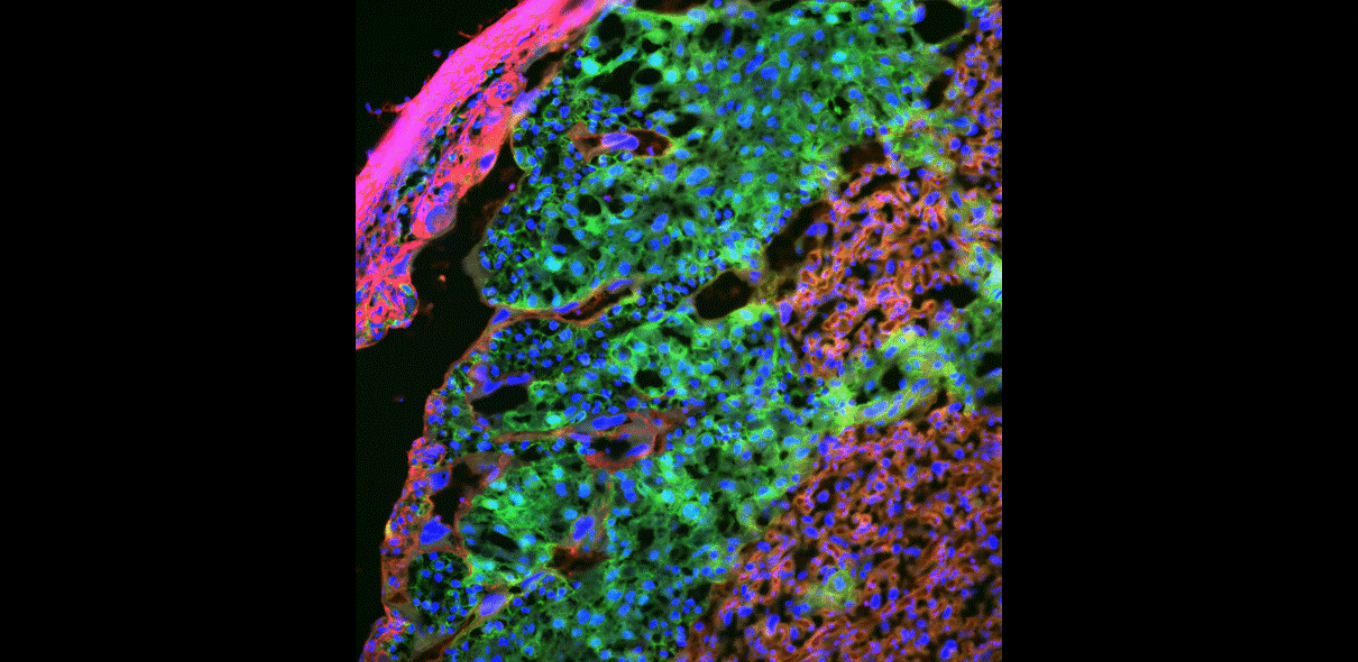
Submitted by Emily Rigby on Mon, 07/08/2023 - 11:14
A new study from researchers from the Centre for Trophoblast Research at Cambridge’s Department of Physiology, Development and Neuroscience and the Medical Research Council Metabolic Diseases Unit, part of the Wellcome-MRC Institute of Metabolic Science, has discovered that fetuses use a copy of a gene inherited from their dad to force their mum to release as much nutrients as possible during pregnancy.
The paper, Fetal manipulation of maternal metabolism is a critical function of the imprinted Igf2 gene, published in Cell Metabolism, examines how the placenta communicates with the mother through the release of hormones to accommodate her baby’s growth. In pregnant mice, researchers were able to selectively alter the signalling cells in the placenta that tell mothers to allocate nutrients to her developing fetuses.
Professor Amanda Sferruzzi-Perri, Professor in Fetal and Placental Physiology, and co-senior author of the paper, said: “It’s the first direct evidence that a gene inherited from the father is signalling to the mother to divert nutrients to the fetus.”
The unborn baby ‘remote controls’ its mother’s metabolism so the two are in a nutritional tug of war, with genes controlled by the father being greedy, and manipulating maternal resources to benefit the fetuses growth. The mother’s body wants the baby to survive but needs to keep enough glucose and fats circulating in her system for her own health, to be able to deliver the baby, breastfeed and to reproduce again.
Professor Sferruzzi-Perri went on to explain: “Those genes from the mother that limit fetal growth are thought to be a mother’s way of ensuring her survival, so she doesn’t have a baby that takes all the nutrients and is too big and challenging to birth. The mother also has a chance of having subsequent pregnancies potentially with different males in the future to pass on her genes more widely.”
Researchers deleted the expression of an important imprinted gene called Igf2, which provides instructions for making a protein called ‘Insulin Like Growth Factor 2’. Similar to the hormone insulin, which is responsible for making and controlling glucose levels in our circulation, the gene promotes fetal growth and plays a key part in the development of fetal tissues including the placenta, liver and brain.
Dr Jorge Lopez-Tello, a lead author of the study based at the University’s Department of Physiology, Development and Neuroscience, said: “If the function of Igf2 from the father is switched off in signalling cells, the mother doesn’t make enough amounts of glucose and lipids – fats – available in her circulation. These nutrients therefore reach the fetus in insufficient amounts and the fetus doesn’t grow properly.”
The scientists found that deleting Igf2 from the placenta’s signalling cells affects the production of other hormones that modulate the way the mother’s pancreas produces insulin, and how her liver and other metabolic organs respond.
“We found Igf2 controls the hormones responsible for reducing insulin sensitivity in the mother during pregnancy. It means the mother’s tissues don’t absorb glucose so nutrients are more available in the circulation to be transferred to the fetus,” said Professor Sferruzzi-Perri.
Babies with Igf2 gene defects can be overgrown or growth-stunted. “Until now, we didn’t know that part of the Igf2 gene’s role is to regulate signalling to the mother to allocate nutrients to the fetus,” added Professor Sferruzzi-Perri.
The mice studied were smaller at birth and their offspring showed early signs of diabetes and obesity in later life.
Professor Sferruzzi-Perri said: “Our research highlights how important the controlled allocation of nutrients to the fetus is for the lifelong health of the offspring, and the direct role the placenta plays.
“The placenta is an amazing organ. At the end of pregnancy, the placenta is delivered by the mother, but the memories of how the placenta was functioning leaves a lasting legacy on the way those fetal organs have developed and then how they’re going to function through life.”
The next step is to understand how placental hormones are controlled by Igf2 and what those hormones are doing. Future research could help scientists discover new strategies to target the placenta to improve health outcomes for mums and babies.
(taken from St Johns College, Cambridge press release)

